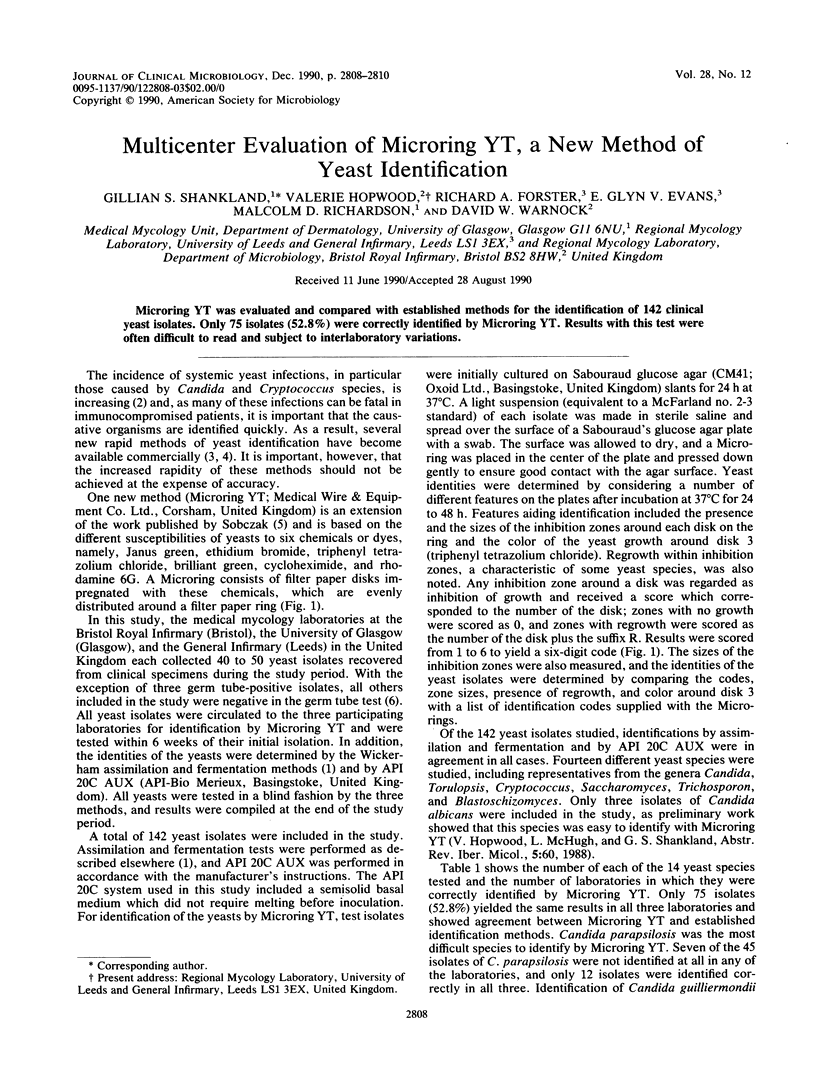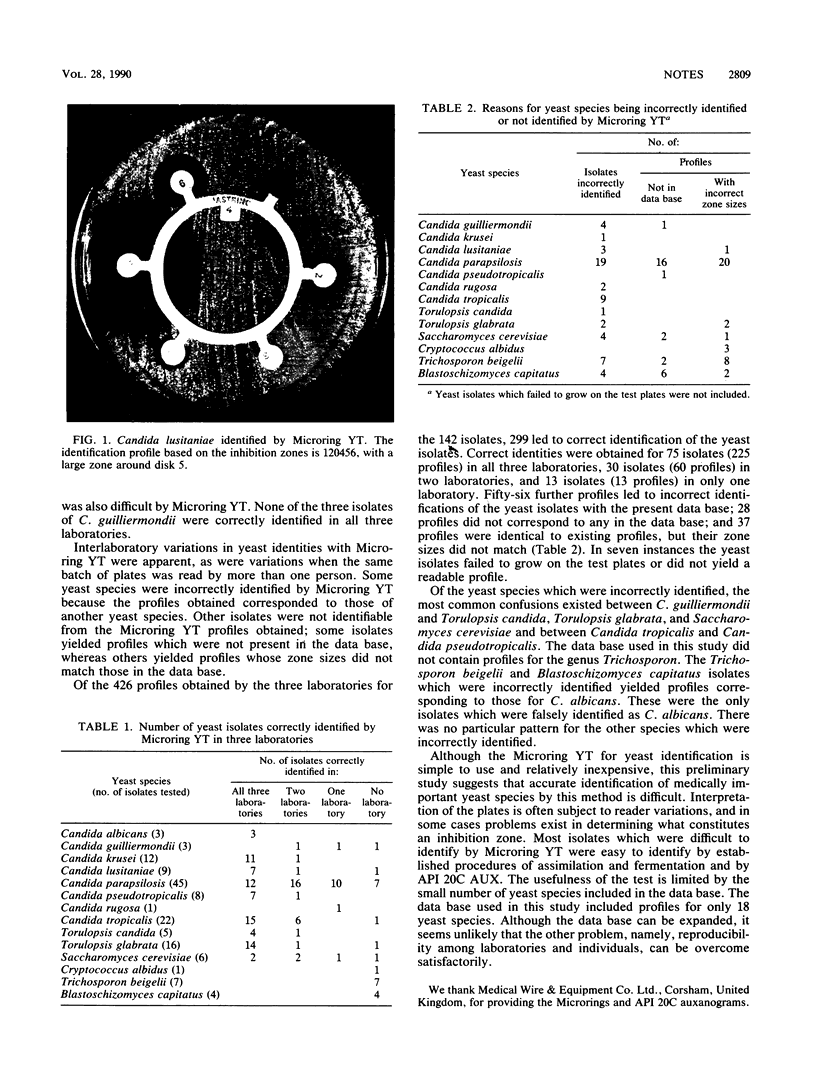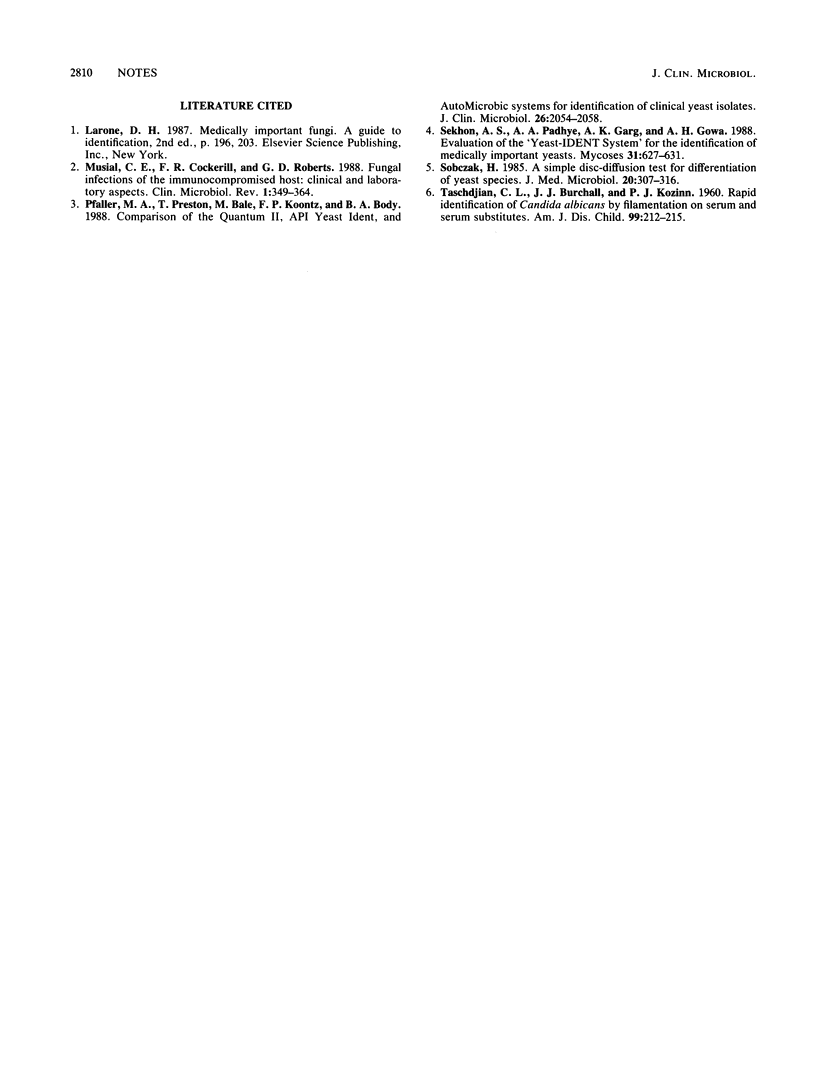Abstract
Microring YT was evaluated and compared with established methods for the identification of 142 clinical yeast isolates. Only 75 isolates (52.8%) were correctly identified by Microring YT. Results with this test were often difficult to read and subject to interlaboratory variations.
Full text
PDF


Images in this article
Selected References
These references are in PubMed. This may not be the complete list of references from this article.
- Musial C. E., Cockerill F. R., 3rd, Roberts G. D. Fungal infections of the immunocompromised host: clinical and laboratory aspects. Clin Microbiol Rev. 1988 Oct;1(4):349–364. doi: 10.1128/cmr.1.4.349. [DOI] [PMC free article] [PubMed] [Google Scholar]
- Pfaller M. A., Preston T., Bale M., Koontz F. P., Body B. A. Comparison of the Quantum II, API Yeast Ident, and AutoMicrobic systems for identification of clinical yeast isolates. J Clin Microbiol. 1988 Oct;26(10):2054–2058. doi: 10.1128/jcm.26.10.2054-2058.1988. [DOI] [PMC free article] [PubMed] [Google Scholar]
- Sekhon A. S., Padhye A. A., Garg A. K., Gowa A. H. Evaluation of the "Yeast-IDENT System" for the identification of medically important yeasts. Mycoses. 1988 Dec;31(12):627–631. [PubMed] [Google Scholar]
- Sobczak H. A simple disk-diffusion test for differentiation of yeast species. J Med Microbiol. 1985 Dec;20(3):307–316. doi: 10.1099/00222615-20-3-307. [DOI] [PubMed] [Google Scholar]
- TASCHDJIAN C. L., BURCHALL J. J., KOZINN P. J. Rapid identification of Candida albicans by filamentation on serum and serum substitutes. AMA J Dis Child. 1960 Feb;99:212–215. doi: 10.1001/archpedi.1960.02070030214011. [DOI] [PubMed] [Google Scholar]



